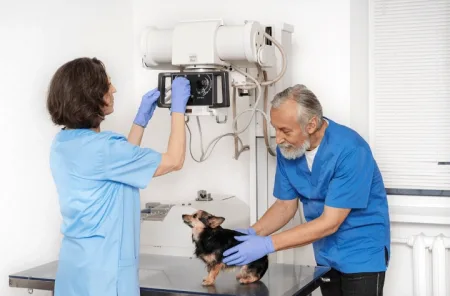In the ever-evolving landscape of automotive technology, the quest for cleaner air has become a paramount goal. This article delves into the innovative technologies at the forefront of automotive emission control, focusing on the intricate mechanisms that help keep our air cleaner and reduce the environmental impact of vehicle exhaust.
The Evolution of Emission Control
1. Pioneering Solutions: A Historical Perspective
The automotive industry has come a long way in addressing the environmental challenges posed by vehicle emissions. Decades ago, the introduction of catalytic converters marked a significant milestone in the pursuit of cleaner air. The initial catalytic converters primarily focused on reducing harmful pollutants like carbon monoxide (CO) and nitrogen oxides (NOx) through a process called oxidation and reduction. While these early systems were effective, the evolution of emission control technology continued to push boundaries.
2. The Three-Way Catalytic Converter: A Breakthrough in Precision
At the heart of modern emission control systems lies the three-way catalytic converter, a technological marvel that plays a pivotal role in reducing not only carbon monoxide and nitrogen oxides but also hydrocarbons. This advanced converter achieves its effectiveness through a sophisticated chemical process that occurs within its core. The converter contains a catalyst, usually made of platinum, palladium, and rhodium, which facilitates three simultaneous reactions: the oxidation of carbon monoxide to carbon dioxide, the reduction of nitrogen oxides to nitrogen and oxygen, and the conversion of unburned hydrocarbons to carbon dioxide and water. This three-way catalytic converter, with its ability to address multiple pollutants simultaneously, stands as a testament to precision engineering in the pursuit of cleaner air.
3. Oxygen Sensors and Closed-Loop Control
Complementing the three-way catalytic converter’s capabilities are oxygen sensors and closed-loop control systems. These sensors monitor the level of oxygen in the exhaust gases, providing real-time feedback to the engine control unit (ECU). The ECU uses this information to adjust the air-fuel mixture delivered to the engine, ensuring optimal combustion efficiency. This closed-loop control mechanism not only enhances fuel efficiency but also plays a crucial role in maximizing the effectiveness of the catalytic converter. The synergy between oxygen sensors, closed-loop control, and the three-way catalytic converter exemplifies the interconnected technologies working in harmony to cleanse vehicle exhaust.
The Impact of Innovative Catalytic Technologies
1. Substantial Reduction in Harmful Emissions
The implementation of the three-way catalytic converter has led to a substantial reduction in harmful emissions from vehicles. Carbon monoxide, nitrogen oxides, and hydrocarbons, once major contributors to air pollution, are now significantly mitigated. This reduction is particularly critical in urban areas where vehicular emissions contribute to smog formation and compromise air quality. The three-way catalytic converter’s ability to address a spectrum of pollutants underscores its effectiveness in promoting cleaner air for communities around the world.
2. Stricter Emission Standards and Global Compliance
As environmental awareness grows, regulatory bodies worldwide are imposing stricter emission standards for vehicles. The adoption of innovative catalytic technologies, especially the three-way converter, has become essential for automakers to comply with these stringent regulations. Beyond meeting legal requirements, embracing advanced emission control technologies reflects a commitment to environmental stewardship and positions automotive manufacturers as contributors to global sustainability efforts. The catalytic converter, once a symbol of regulatory compliance, has evolved into a catalyst for positive environmental change.
3. Advancements in Sustainable Transportation
The impact of catalytic technologies extends beyond traditional combustion engines. With the rise of electric and hybrid vehicles, the automotive industry is witnessing a paradigm shift towards cleaner and more sustainable transportation. Even in this new era, the lessons learned from catalytic converters play a role. As hybrid and electric vehicles become more prevalent, the transition away from traditional combustion engines contributes to further reducing the overall environmental footprint of transportation.
The Future of Emission Control: Innovations on the Horizon
1. Advancements in Catalytic Materials and Nanoengineering
The journey towards cleaner air continues with ongoing research and development in catalytic materials and nanoengineering. Scientists and engineers are exploring new catalyst compositions and nanostructured materials to enhance the efficiency of catalytic converters further. These advancements aim to improve catalytic activity, reduce reliance on precious metals, and increase the longevity of catalytic systems. Nanoengineering, with its focus on manipulating materials at the molecular and atomic levels, holds promise for creating catalytic converters that are not only more effective but also environmentally sustainable.
2. Integration with Hybrid and Electric Technologies
As hybrid and electric vehicles gain prominence, the integration of emission control technologies is taking new forms. While these vehicles produce fewer tailpipe emissions, there remains a focus on reducing the environmental impact of manufacturing processes and battery production. Innovations in catalytic technologies are anticipated to play a role in addressing these aspects, contributing to the overall sustainability of electric and hybrid transportation.
3. Global Collaborations for Clean Air Solutions
The pursuit of cleaner air is a global endeavor, necessitating collaboration among governments, industries, and research institutions. International partnerships are emerging to share knowledge, technologies, and best practices in emission control. As the automotive industry continues to embrace the responsibility of mitigating its environmental impact, these collaborative efforts are expected to drive the development of innovative solutions for cleaner air on a global scale.
Final Thoughts
In conclusion, the unveiling of the technology that keeps our air cleaner is a testament to the automotive industry’s commitment to environmental responsibility. The three-way catalytic converter, along with complementary technologies, has been a driving force in reducing harmful emissions from vehicles. As we look to the future, ongoing innovations in catalytic materials, nanoengineering, and global collaborations promise even more significant strides towards achieving cleaner air for generations to come. The journey from pioneering solutions to cutting-edge advancements reflects an unwavering dedication to sustainable transportation and a healthier planet.



